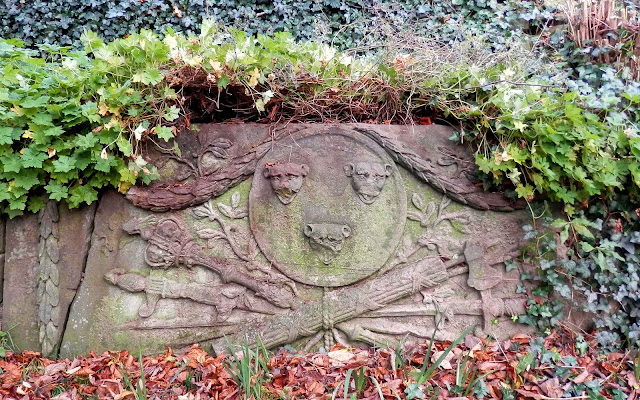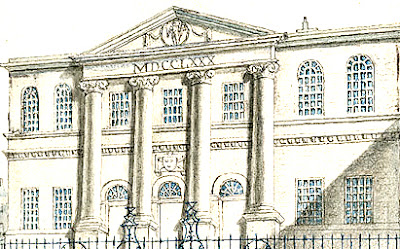At the front of Birmingham Catholic Cathedral, one will find a number of heraldic designs in glass panels, including these arms. As we're a bit away from Shropshire, it was odd to see the loggerheads here.
However, the Birmingham Diocesan Archivist points out that they represent the coat of arms of Thomas Brown, the first Bishop of Newport & Menevia (died 1880). The Catholic Diocese of Newport & Menevia, which doesn't exist any more, covered the whole of Wales (which is why the Welsh harp) plus, oddly, Herefordshire.
So... what's the connection? Bit mysterious, this.
The usual explanation is that the ancient arms of the see of Hereford carry the three leopards' heads, which is why Bishop Brown adopted them - but the Hereford ones are upside down with fleur-de-lys issuing from them... so that explanation seems a bit thin, to me.
Does anyone have a better explanation?
The leopards' faces are also rather crudely painted, which also struck me as odd.
Please let us have your thoughts... Use the comments field just down this page or email us direct.
++++
To
comment on this post, just use the Comments field down this page or email us direct.
To get an email alert into your inbox every time we make a new post (about once a week), just put your email address into the Follow By Email Box (in the column to the right on this page) and hit Submit











